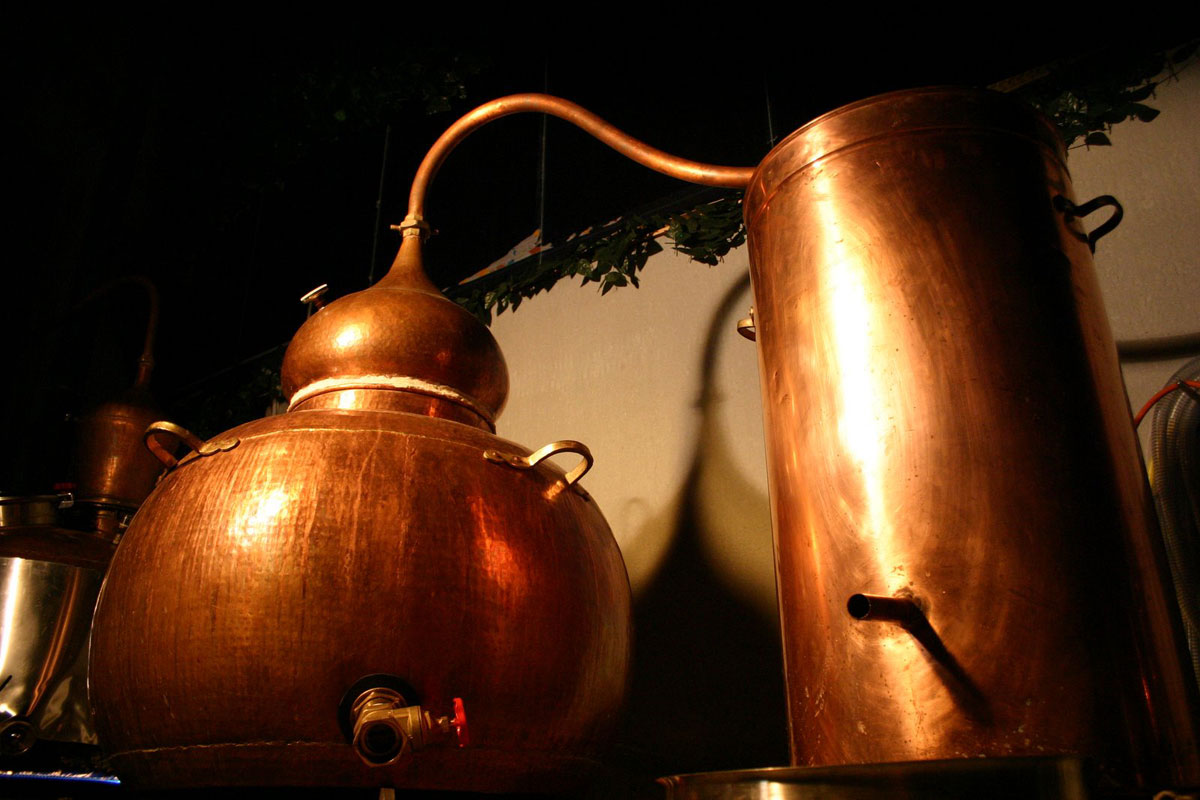
Alambic still being used for cognac. Sémhur / wikimedia / 2009 / CC BY-SA 2.0
Alcohol produced in very large quantities is made in a “continuous” still (aka Coffey, patent or column still.) In this type of still, you can just keep your production flowing through the still constantly. This is ideal for products such as gin or vodka.
Alambic stills are different. They make alcohol in one distinct batch at a time, and have to be emptied and cleaned after each batch.
An alambic still has a heating chamber over top a source of heat. Above that, there is an onion-shaped portion to collect vapours, and above that, a curved pipe that carries the vapour to a chamber where the vapours get condensed by being cooled down by circulating water.
They are made of copper and bronze.
Alambic stills are used by some Tequila producers in Mexico. They feel the best alambic stills are made in Tomelloso, Spain.
History Notes
The Alambic design is considered to have been perfected in France in the late 1700s.
Language Notes
“Alambic” comes from the Greek word “ambix”, meaning a vase with a small neck on it. In Arabic, the prefix “al” got added, and the “x” changed to “c.”

Copper alambic still. Bitterherbs1 / wikimedia / 2009 / CC BY-SA 3.0

